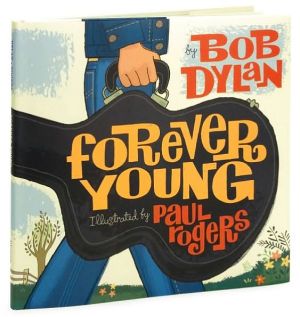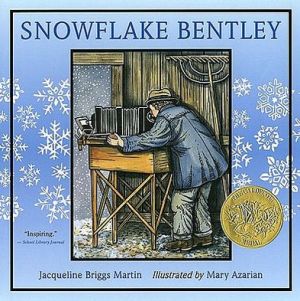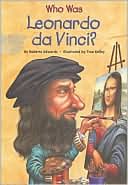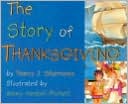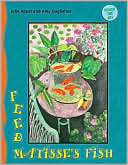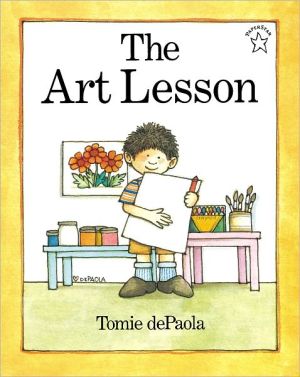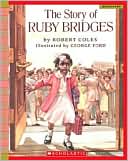Forever Young
Since it first appeared on the 1974 album Planet Waves, "Forever Young" has been one of Bob Dylan's most beloved songs. Now award-winning artist Paul Rogers gives us a new interpretation of the lyrics. With images inspired by classic Dylan songs and pieces of his life, this is a bold and touching tribute to an anthem whose message will always stay forever young.
Search in google:
Since it first appeared on the 1974 album Planet Waves, "Forever Young" has been one of Bob Dylan's most beloved songs. Now award-winning artist Paul Rogers gives us a new interpretation of the lyrics. With images inspired by classic Dylan songs and pieces of his life, this is a bold and touching tribute to an anthem whose message will always stay forever young.Publishers WeeklyDylan's 1974 anthem unfolds as a series of vignettes following the growth of a musician/activist (his clean-cut blondness is a far cry from the scruffiness of the real Dylan). "May you grow up to be righteous,/ May you grow up to be true" finds the hero fist-bumping an African-American school chum; "May you have a strong foundation/ When the winds of changes shift" captures him on the front lines of a peace demonstration. Rogers's line drawings may surprise admirers of his Jazz ABZ: the chilly rendering style and the flat, digitally manipulated compositions recall 1960s low-budget animation. The key to this book's likeliest audience, however, rests in the many visual shout-outs to Dylan's career (they're all explained in an endnote). DA Pennebaker can be seen filming the peace march, while Edie Sedgwick, Joan Baez and other hipster icons are among the marchers; another spread depicts the Greenwich Village clubs where Dylan played in the 1960s, and throws in references to both "Lay, Lady, Lay" (a big brass bed glimpsed through a window) and the cover of the 1963 album The Freewheelin' Bob Dylan.Baby boomers will have a blast decoding it all. All ages. (Sept.)Copyright © Reed Business Information, a division of Reed Elsevier Inc. All rights reserved.
\ From Barnes & Noble"May your hands always be busy, / May your feet always be swift, / May you have a strong foundation / When the winds of changes shift. / May your heart always be joyful, / May your song always be sung, / May you stay forever young…" Bob Dylan's anthem "Forever Young" remains as fresh as it was when it was first sung in 1974. This graceful, unpretentious Paul Young picture book plays on the resonance of lyrics that can touch any generation, from babies to baby boomers.\ \ \ \ \ Publishers WeeklyDylan's 1974 anthem unfolds as a series of vignettes following the growth of a musician/activist (his clean-cut blondness is a far cry from the scruffiness of the real Dylan). "May you grow up to be righteous,/ May you grow up to be true" finds the hero fist-bumping an African-American school chum; "May you have a strong foundation/ When the winds of changes shift" captures him on the front lines of a peace demonstration. Rogers's line drawings may surprise admirers of his Jazz ABZ: the chilly rendering style and the flat, digitally manipulated compositions recall 1960s low-budget animation. The key to this book's likeliest audience, however, rests in the many visual shout-outs to Dylan's career (they're all explained in an endnote). DA Pennebaker can be seen filming the peace march, while Edie Sedgwick, Joan Baez and other hipster icons are among the marchers; another spread depicts the Greenwich Village clubs where Dylan played in the 1960s, and throws in references to both "Lay, Lady, Lay" (a big brass bed glimpsed through a window) and the cover of the 1963 album The Freewheelin' Bob Dylan.Baby boomers will have a blast decoding it all. All ages. (Sept.)\ Copyright © Reed Business Information, a division of Reed Elsevier Inc. All rights reserved.\ \ \ Children's Literature\ - Barbara L. Talcroft\ May your heart always be joyful, / May your song always be sung / May you stay forever young. . . . Lyrics of Dylan's 1974 song provide the text for this homage to the legendary singer, whose early career inspired the illustrations by artist Paul Rogers. Cartoon-style drawings fill wide double-page spreads, offering young readers (who may or may not know Dylan's work) a glimpse of life in the sixties in Greenwich Village, with a side excursion to 1965's Newport Folk Festival, where Dylan went electric. Rogers has incorporated myriad images and details gleaned from Dylan's life, lyrics, and influences, beginning with the picture of a blond boy listening to Woody Guthrie playing outside Folk City in New York. Sharp-eyed readers will spot references to many of Dylan's best-known songs, while street scenes include Dylan's friends and idols like Guthrie, Jack Kerouac, Joan Baez, Allen Ginsberg, and Pete Seeger. The most affecting illustration shows nighttime Macdougal Street, including Dylan's haunts Cafe Wha?, The Gaslight Cafe, and Gerde's Folk City, with images of city landmarks in the background. Aficionados, especially older ones, will detect many more clues in scenes ranging from a protest march, to a "Save the Planet" sign-up in Washington Square and a Newport street with electric guitars in Maggie's pawn shop window. For those who have yet to discover Dylan's work, Rogers provides two pages of comments on the spreads, with recommendations for listening; this intriguing tribute would be a perfect place to begin. Reviewer: Barbara L. Talcroft\ \ \ \ \ School Library JournalK-Gr 4\ Rogers has fashioned Dylan's 1973 song into an homage to the musician and to coming of age in the 1960s. Adults familiar with the songwriter's life and albums will recognize images in the artwork that recall the period. For those who miss these references, a page-by-page explanation of the visual clues is appended. Most children will feel that the text reads like a blessing spoken by an adult to a growing boy. The illustrations show a street musician giving his guitar to a Caucasian child. He learns to play it and becomes friends with an African-American boy. The two eventually form their own street band, travel the country in a VW bug, and participate in rallies to save the planet and stop the war. The story comes full circle as the young man passes his guitar on to a girl at song's end. Some of the images will be confusing to those who don't read the back matter; e.g., the sticker on the guitar case that reads, "This machine kills Fascists" is a Woody Guthrie reference. A pleasant but additional purchase that will give baby boomers an opportunity to wax nostalgic about "the good old days" with their grandkids.-Martha Simpson, Stratford Library Association, CT\ \ \ \ \ \ Kirkus ReviewsRogers sets Dylan's timeless lyric (composed, writes the renowned author, "in a minute") to simply drawn and colored cartoon scenes strewn with references to iconic '60s-era people and places, as well as Dylan songs and albums. The result is a keepsake of the period that will nonetheless speak to modern readers. The archetypal plot follows an eager lad who takes the guitar passed to him by a smiling busker outside Gerde's Folk City, and at the end passes the instrument in turn to an even younger girl. In between, he sings in the park for the likes of Joan Baez, zooms down Highway 61 in a VW beetle and marches beneath antiwar signs with Martin Luther King Jr. and others. The illustrator provides a partial key at the end, along with the occasional musical recommendation. Modern songs don't generally make the leap to this format successfully-Dylan's own Man Gave Names to All the Animals (1999), illustrated by Scott Menchin, being a case in point-but here's a rare exception. (Picture book. 6-8, Boomers)\ \
